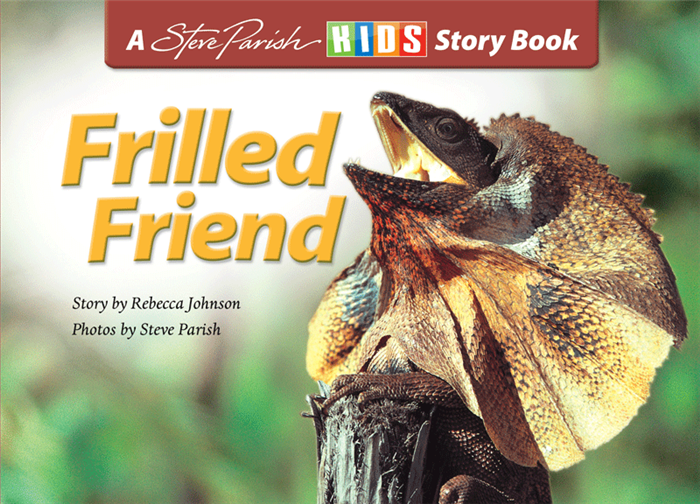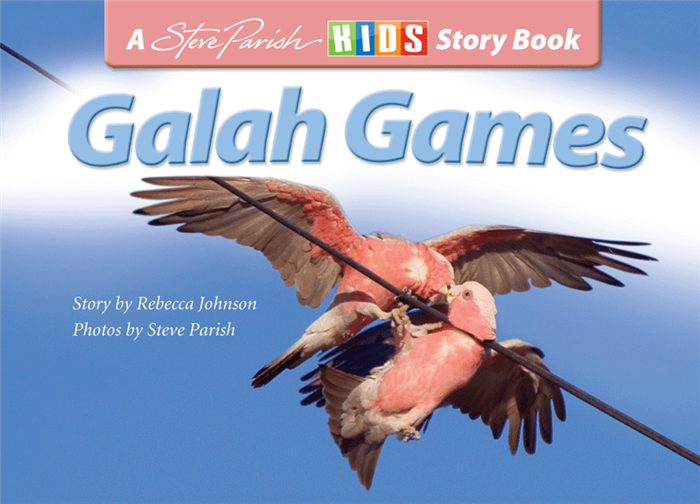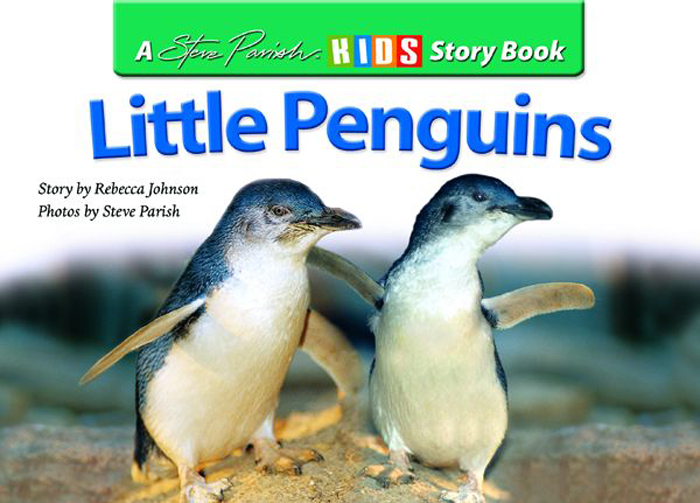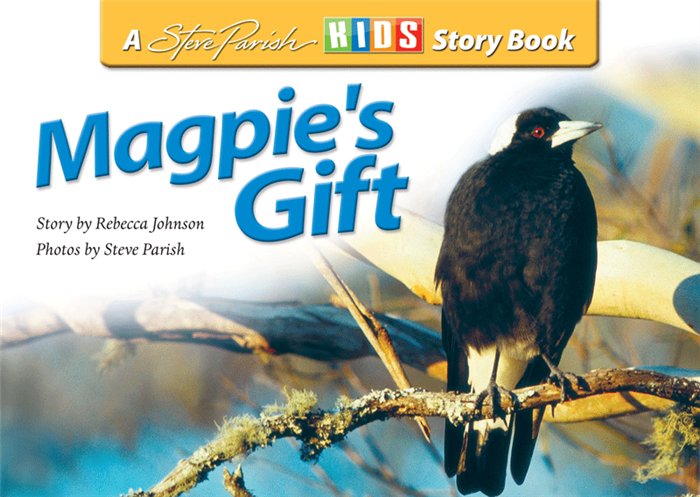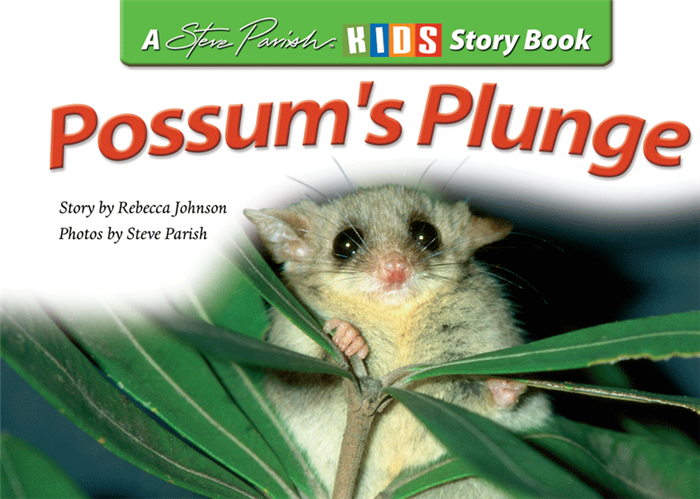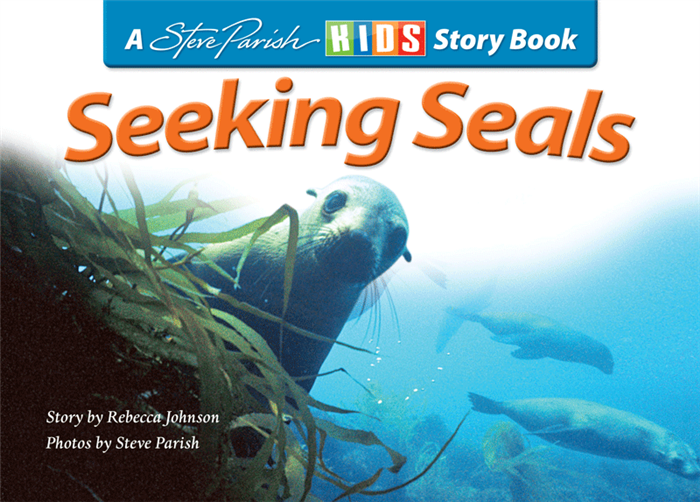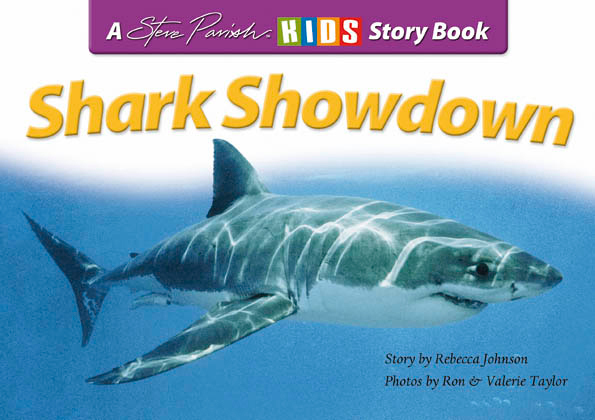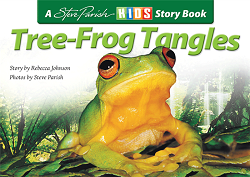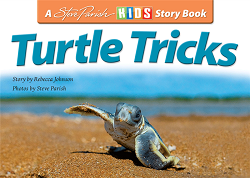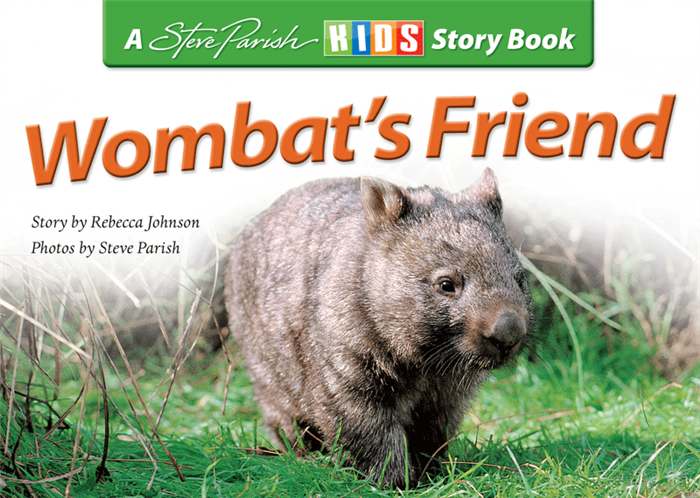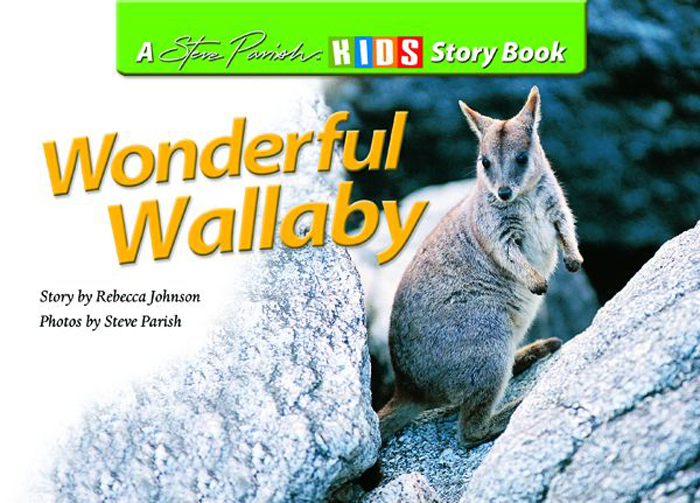Steve Parish Story Book Collection
The Steve Parish Story Book collection (now published by Pascal Press) featuring Australian wildlife, combines full-colour photographs by award-winning photographer Steve Parish with fact-filled fiction stories. The Steve Parish Story Book collection has been extremely popular, with over 3 000 000 books sold.
Read reviews on the Steve Parish Story Book Collection
Purchase books from the Steve Parish Story Book Collection
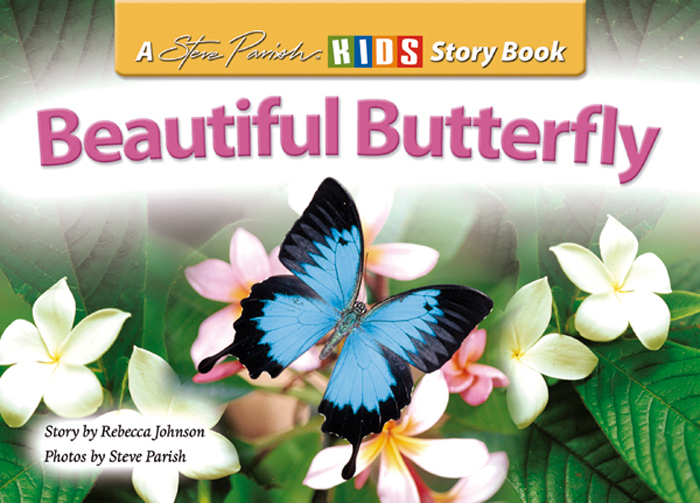
In Beautiful Butterfly, we have taken some liberties with nature — you won’t find all the insects in this story living together in the same habitat. But in the world of the Beautiful Butterfly, who learns her lesson about vanity and pride the hard way, anything is possible.
The iridescent blue and black ulysses butterfly is a swallowtail butterfly from the wet tropical rainforest of northern Queensland. The dull brown underside of the wings helps to camouflage this large butterfly that has a wingspan of about 10 cm.
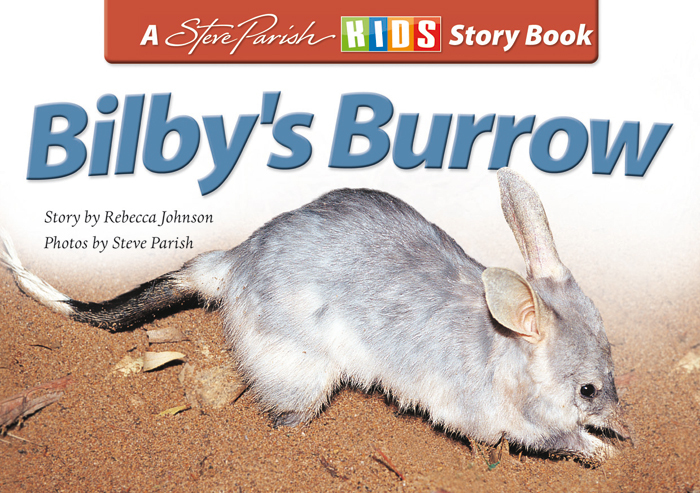
In Bilby’s Burrow, a little bilby escapes from a dingo. She gets lost and has to find her way back to the safety of her burrow.
In the wild, bilbies have become rare because they are preyed on by foxes and feral cats, and rabbits compete for food. Now they are limited to desert areas where the introduced animals cannot find enough water to survive. A bilby is about the size of a rabbit and spends the day in a burrow that protects it from the heat. It feeds at night on insects and larvae, seeds, bulbs, fruit and fungi. A protection and recovery program for the bilby operates from Charleville in Queensland.
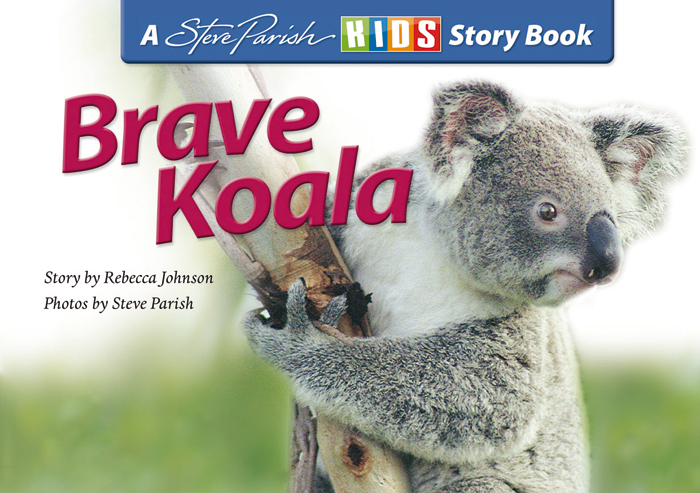
In Brave Koala, a young koala decides he is ready to explore the world by himself.
The koala is a marsupial — a mammal that raises its young, called a joey, in a pouch or fold of skin. A newborn joey climbs through its mother’s fur to the pouch, where it stays for 6 months. When a joey leaves the pouch, it will stay with its mother, hitching rides on her back, until it is about 12 months old.
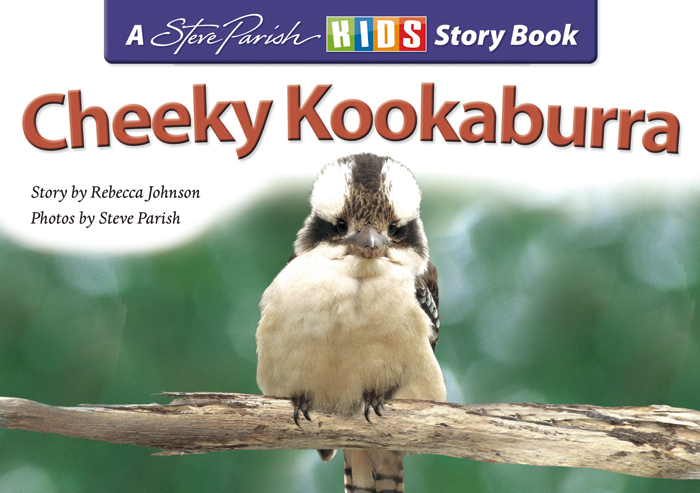
In Cheeky Kookaburra, a young kookaburra enjoys being the comedian of his family. But when he has something important to say, no-one takes him seriously!
The laughing kookaburra is the largest member of the kingfisher family. It is well known for its cry, which sounds like laughter. The cry of the blue-winged kookaburra is higher in pitch. Kookaburras call to claim their territory, which they share with family members. The white kookaburra is an albino that Steve Parish photographed at Healesville Sanctuary in Victoria.
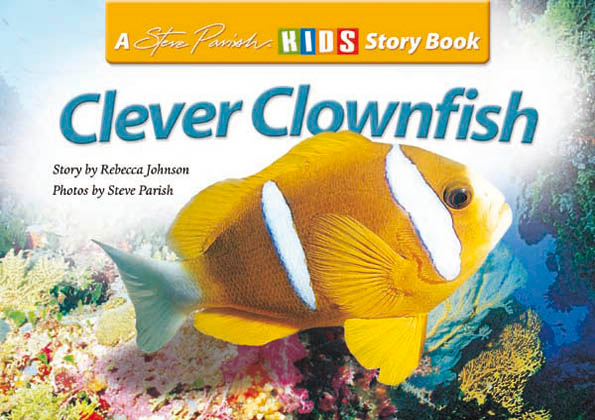
In Clever Clownfish, a lonely little fish leaves his anemone to travel across the reef in search of a friend. After seeing many other beautiful fish, he finally finds a female of his own kind.

In Cockatoo Calling, a sulphur-crested cockatoo overhears people talking about cutting down the dead trees in the paddock. He calls a meeting of all the parrots so they can help him carry out his plan to save their homes.
The birds in this story all belong to the parrot family. Parrots lay white eggs and make their nests in tree hollows. Unlike many other birds, parrots can use their claws to hold food when eating.

In Cranky Crocodile, a mother saltwater crocodile worries about her babies’ safety and sets out to make sure they are secure.
Saltwater crocodiles are also known as estuarine crocodiles because they live in fresh and brackish water as well as salt water. A female lays 40 to 60 eggs in a large nest mound. The eggs take about 90 days to hatch and the mother must protect them carefully. When the young hatch they make chirping sounds, which is a signal for the mother to dig them out and carry them to the water in her mouth.
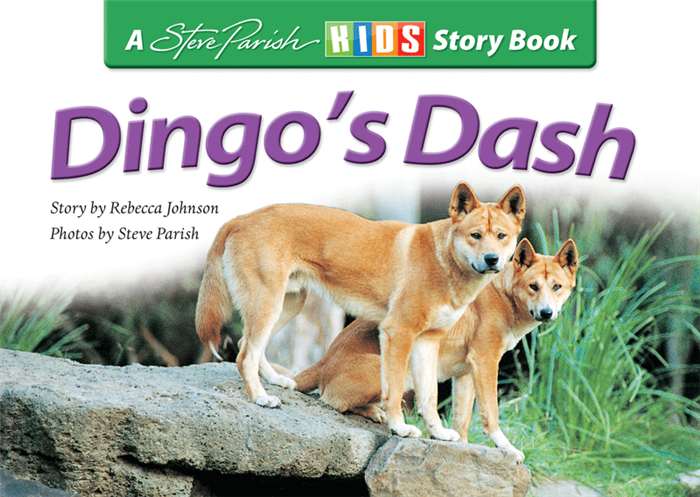
In Dingo’s Dash, two young dingoes learn a valuable lesson about minding their own business.
The dingo is a medium-sized wild dog brought to Australia from Asia 4000 years ago. Dingoes are found in all Australian States except Tasmania. They usually have ginger-coloured fur but may also be white or have black-and-tan colouring.
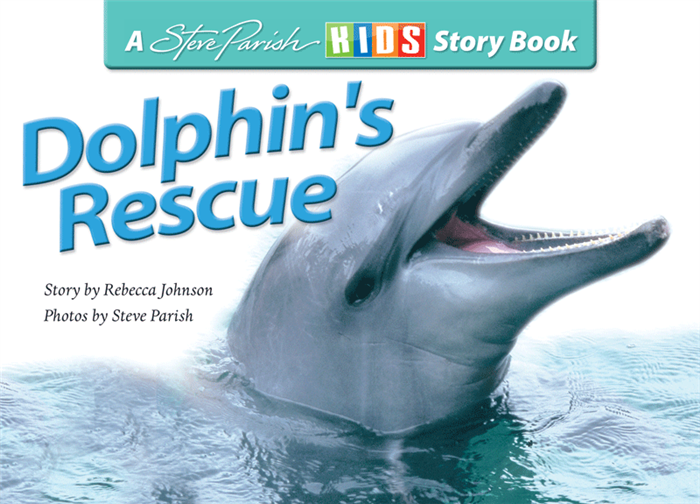
In Dolphin’s Rescue, the young dolphin we met in Dolphin’s Triumph discovers her friend in danger. She must find a way to help, and quickly. Then she remembers what her mother taught her.
The bottlenose dolphin communicates using high-pitched whistles, squeaks, creaks and clicks. It uses those sounds to make sense of the underwater world using echolocation: sending sounds that bounce off an object back to the dolphin, which then interprets the sound.
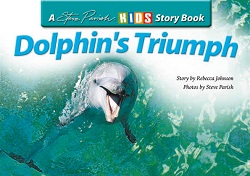
In Dolphin’s Triumph, a baby dolphin learns that determination pays off. She practices swimming fast until she can leap from the water and fly through the air in an arch.
Bottlenose dolphins are marine mammals. They live in the sea, breathe air, and have warm blood. Baby marine mammals (called calves) drink their mother’s milk. Dolphins enjoy swimming fast, surfing the waves, and leaping out of the water.
In Frilled Friend, a frilled lizard thinks he is just ordinary and brown — there is nothing special about him. Even the spinifex hopping-mice ignore him as they gather their food. All that is about to change, as one day a huge monitor threatens all the mice and the ordinary brown lizard finally gets the chance to show them his true colours.
The frilled lizard is one of the world’s most spectacular dragons. When threatened, it opens its mouth wide displaying a bright yellow interior, and hisses loudly. Looking fierce, it also opens an impressive neck frill.
In Galah Games, Ernie and Eddie are two galahs that act silly and annoy the rest of the flock. One day, Ernie plays a trick that goes too far and upsets everyone. Ernie and Eddie fly away wondering why nobody laughs with them. When they are gone, the others in the flock learn a valuable lesson, as do Ernie and Eddie.
Galahs are well known for their silly antics. They may hang from a branch upside down, by one foot, while flapping their wings and screeching loudly, only to be ignored by the rest of the flock.
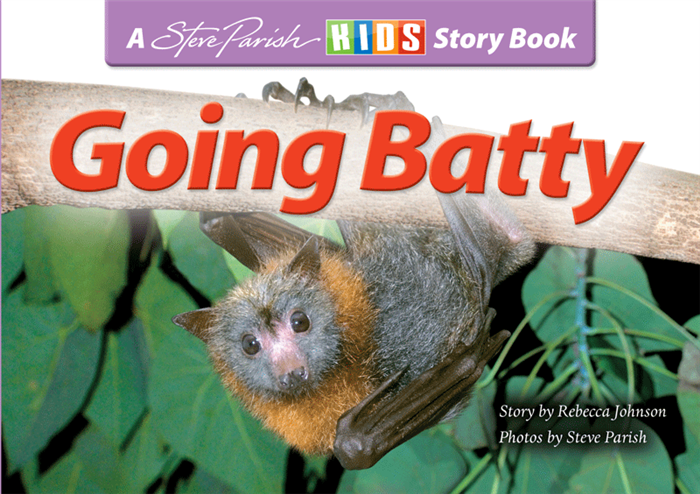
Is Freddie seeing things? There are dangers everywhere he looks but are they real or imagined? Find out how Freddie finds a unique solution to avoid going batty!
Fruit bats, otherwise known as flying-foxes, hang upside down from their perches. Valves in their veins prevent blood from collecting in their brains. Even though they live upside down, they have exceptional eyesight and unlike microbats, their smaller cousins, fruit bats don’t need to use echolocation to navigate.
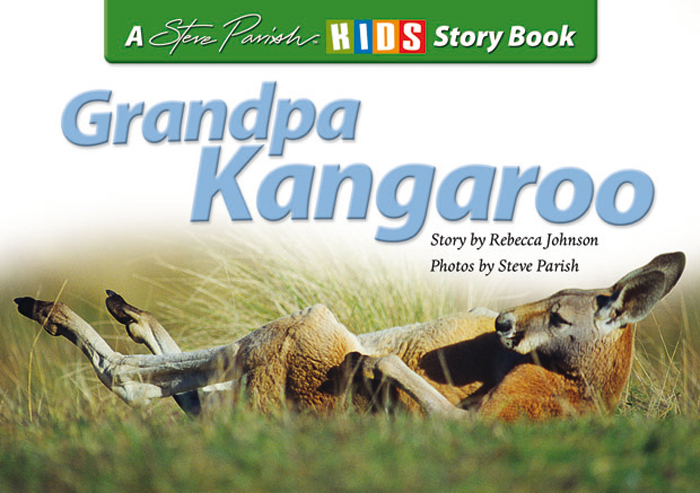
Looking after a bunch of boisterous youngsters was taking its toll on Grandpa Kangaroo. All he could think of was finding some time to himself — but that meant being alone.
Kangaroos live in groups called mobs. Usually a large male kangaroo oversees a number of females and their young. While some kangaroos in the mob have their heads down grazing, others keep watch for danger. A kangaroo alone could easily fall prey to dingoes or other predators.
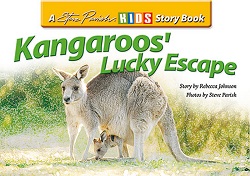
In Kangaroos’ Lucky Escape, a rock-wallaby helps a mob of kangaroos escape the danger of a bushfire.
Kangaroos and wallabies are all macropods (big-footed animals). They move by hopping, using their tails for balance. Kangaroos live on grassy plains. Their agile cousin, the rock-wallaby, easily hops up and down the uneven slopes of its home in rocky, hilly country.
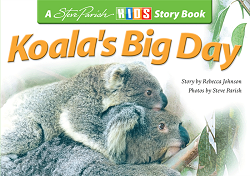
In Koala’s Big Day, a baby koala travels with his mother and the other koalas to a gum tree that has enough leaves for everyone.
The koala is unique to Australia. It lives in eucalypt forests in eastern Australia, and eats only gum leaves. Gum leaves are low in energy content, so koalas spend up to 20 hours a day sleeping. A baby koala, called a joey, stays in its mother’s pouch for 6 months, drinking its mother’s milk. It later rides on her back until it is about 12 months old.
In Little Devils, the animals learn that courage is needed in times of danger, even if noisy Tasmanian devils can be hard to live with.
Tasmanian devils are Australia’s largest marsupial carnivores. They hunt and kill prey but they also scavenge and eat carrion. Young Tasmanian devils are at first carried in a backward-facing pouch, and later left in the den while their mother hunts. They become independent less than a year after they are born.
In Little Penguins, two young brothers compete with each other in everything they do. But they take it one step too far and finally have to admit they need help.
Little penguins are seabirds that cannot fly. They are the smallest of all penguins at about 40 cm tall and 1 kg in weight. Little penguins live and breed on the south coast of the Australian mainland, on the Tasmanian coastline, and on several islands south of Australia. Little penguins eat fish, squid and krill, and can be seen at dusk waddling up the beach to their burrows, often in sand dunes, where they build their nests.
In Magpie’s Gift, a magpie is searching for nesting material when he finds a piece of blue wool. However, when he returns to retrieve the wool, it has already been claimed by a satin bowerbird.
The Australian magpie is a large butcher bird with a rich and musical song. The male satin bowerbird is known for decorating its bower, a nest of upright sticks, with bright blue objects.
In Pelican’s Pride, Mr Pelican thinks he is as smart as he is handsome. He seems to do no work, and yet he is sleek and well-fed. The other pelicans are determined to find out how he is able to spend so much of the day preening while they have to work very hard to catch enough fish to fill their bellies.
Pelicans feed on fish, which they scoop up in their large bill and throat pouch. They nest in large flocks on islands or inland lakes after heavy rain. Two eggs are laid and both parents take turns caring for the eggs.
In Possum’s Plunge, two species of possums find they are not so different after all, despite the gossip each has heard about the other.
Pygmy-possums are approximately 7 cm long. The much larger brushtail possums are approximately 55 cm long. Both possums are nocturnal, tree-dwelling marsupials, native to Australia.
Favourite Aussie animals embark on many different page-turning adventures. The stories are written by Rebecca Johnson, a practising teacher, mother and wildlife carer. Based on the 52 virtues, including caring, honesty, forgiveness and unity, these story books also feature type set in Beginners Alphabet and are specifically targeted to beginning and emergent readers. Wonderful Steve Parish photographs exemplify and give added dimension to the text.
Favourite Aussie animals embark on many different page-turning adventures. The stories are written by Rebecca Johnson, a practising teacher, mother and wildlife carer. Based on the 52 virtues, including caring, honesty, forgiveness and unity, these story books also feature type set in Beginners Alphabet and are specifically targeted to beginning and emergent readers. Wonderful Steve Parish photographs exemplify and give added dimension to the text.
Favourite Aussie animals embark on many different page-turning adventures. The stories are written by Rebecca Johnson, a practising teacher, mother and wildlife carer. Based on the 52 virtues, including caring, honesty, forgiveness and unity, these story books also feature type set in Beginners Alphabet and are specifically targeted to beginning and emergent readers. Wonderful Steve Parish photographs exemplify and give added dimension to the text.
In Spiky Echidna, a baby echidna gets a piece of wire caught in between his spines. It takes a friendly possum to pull it out for him.
The short-beaked echidna is a mammal called a monotreme (meaning “one hole” — it has one vent through which everything, including eggs and waste matter, passes). Its young hatches from a leathery-shelled egg then stays in the small, backward-facing pouch until its spines develop. If it is threatened, an echidna will roll up into a spiky ball on hard ground or dig quickly into soft ground.
In Splash the Platypus, Splash and the other platypuses learn that it can be useful to be a little bit different.
Platypuses are egg-laying mammals called monotremes. They live in burrows beside creeks and waterholes and have thick, waterproof fur that keeps them warm when they hunt for food under water.
In Tree-Frog Tangles, a red-eyed tree-frog, from her home in the treetops, hears a wonderful sound. She sets out to find the source but is side-tracked by the interesting noises made by other frogs as she journeys through the forest.
Red-eyed tree-frogs live in leafy foliage high in the trees of wet coastal forests in eastern Australia. They have special pads on their fingers and toes that help them to climb. After heavy rain, males call from lower branches and large groups gather in flooded areas to breed.
Turtle Tricks tells the tale of a clever little turtle who devises a plan to escape ever-present predators.
The heroine is a flatback turtle that lives with her relatives in coastal waters of northern Australia. Adult flatback turtles are olive grey in colour, grow to about 1m long and weigh about 80 kg. Females return to the beach where they hatched to lay their own eggs.
Favourite Aussie animals embark on many different page-turning adventures. The stories are written by Rebecca Johnson, a practising teacher, mother and wildlife carer. Based on the 52 virtues, including caring, honesty, forgiveness and unity, these story books also feature type set in Beginners Alphabet and are specifically targeted to beginning and emergent readers. Wonderful Steve Parish photographs exemplify and give added dimension to the text.
In Wombat’s Friend, the wombat we met in Wombat’s Secret is told she’s strange because of her friendship with the wallaby. She must work out what is important to her — the opinions of others, or her friendship.
There are three species of wombat — the common wombat (the main character in this story and the wombat who falls asleep are both common wombats), the southern hairy-nosed wombat (like the wombat who calls her strange), and the rare northern hairy-nosed wombat.
In Wombat’s Secret, a little wombat learns that the kangaroos have a secret. She sets off to discover what it is.
The common wombat is a mammal that raises its young in a backward-facing pouch. They have poor eyesight and use their sense of smell to find food. Wombats spend the day in a burrow and come out to feed on grasses at night when the air is cool.
In Wonderful Wallaby, a young bridled nailtail wallaby has been spotted by a hungry wedge-tailed eagle. Fortunately, the Mareeba rock-wallaby comes to the rescue.
The bridled nailtail wallaby is found only in and around a national park in central Queensland. The Mareeba rock-wallaby is found in a small area of north Queensland.
